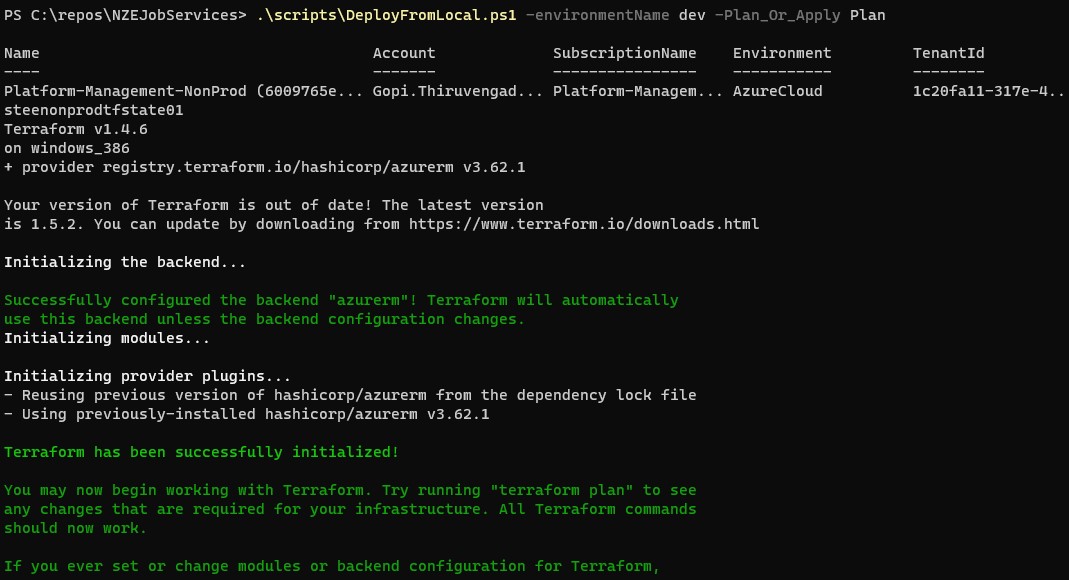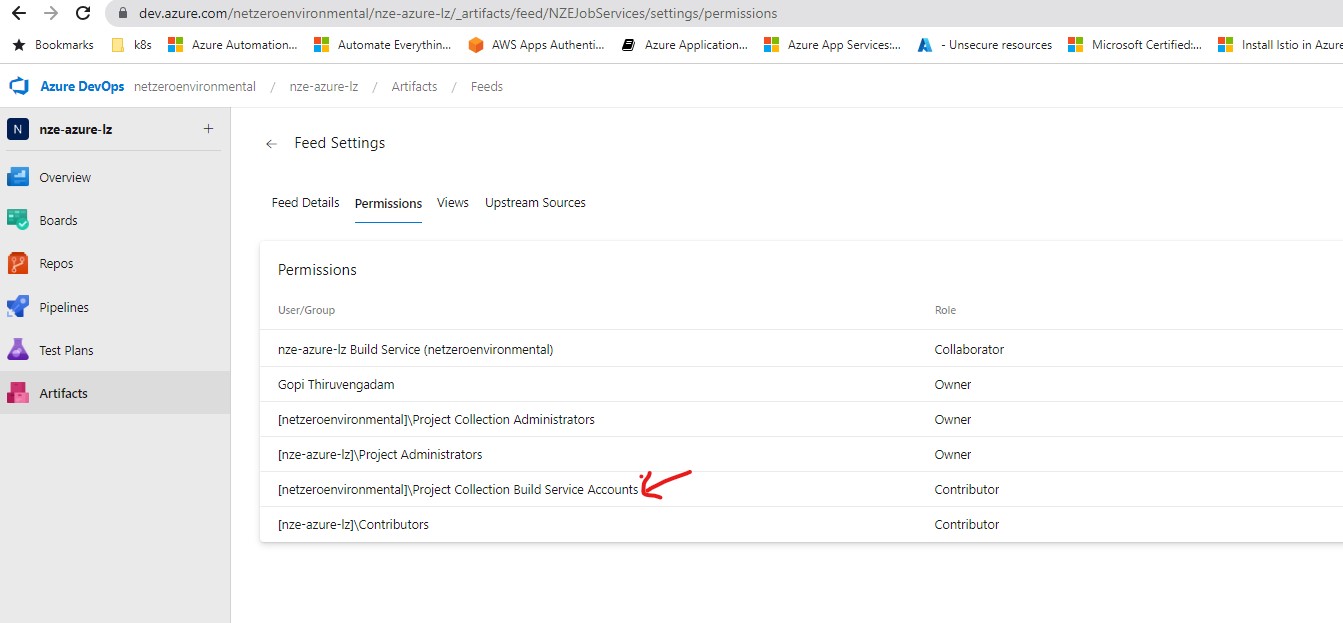For later when converting to generic template, fill out points into details
- work with a single contained area, such as all the job operations
- are other items related or owned by
- no need to know about how anything else works, lowered complexity
- references to other items, but should be up to consumers to decide if they need to retrieve that data from the appropriate service
- defining type structure
- specification of required and optional values, informs the consumer on how to process
- complete in cases, success error and unexpected scenarios
- consumer tools to automatically generate calls and required type structures
- versions of api, backwards compatibility.
The move to .NET core has brought a few language features to simplify definitions and this is very obvious in the move
away from the traditional Startup.cs method of initialising a web app project. Default templates now use the C# 9
top-level statements feature and perform application initialisation in the Program.cs file.
There are several key components that we work with here through the Microsoft.AspNetCore.Builder.WebApplication
builder, mainly we are concerned with the Configuration Logger and Services properties for setting up our
application.
This is where we deal with accessing the provided parameters to the application, values will include items such as database connection string, environment terms or other setup values provided to us from the Azure environment.
Initially, values are taking from the set of appsettings.{environment}.json files in the runtime application directory,
where environment can be specified with the dotnet --environment flag.
When deploying to an Azure environment the settings file will be included in the deployment, however any defined values will be overwritten by those specified in the azure web app environment. It is recommended that users make use of the app settings files for local development and testing, and that these keys match those specified in the deployment environment so that confidential values (such as database connection strings etc) can be kept secret.
the ILogger<T> interface in the service allows us to work with a variety of log output sources, in development this
will generally be the application console, however in the deployed azure environment this will also include our Azure
Application Insights integration.
The Application Insights integration will look for some default configuration values within the web apps deployed environment and should be the recommended approach. However for reference connection values can be defined and handled within the application code itself, this may have some use in the development phase of a feature.
The services property is where we set up application level services that will be provided to our components such as our controllers in a dependency injection fashion. For more information on how dependency injection functions in C# see .NET dependency injection
The main service we will be constructing is our database context, as this is a service that would need to be shared
among multiple controllers (if defined) and needs access to application configuration values such as its connection
strings and table names etc to correctly initialise, this can be seen in our example Program.cs file where an options
builder is used to initialise the context in an environment related fashion.
In most circumstances it is important to understand and configure this correctly within the service, however since all control will be put behind Azure API management we can be permissive with our allowed origins here and control access to the service through Azure VPC and other policies as the service will not itself be publicly exposed.
The most important integration part of this project is its generation of an API contract, which is handled through the use of the OpenAPI specification and the swagger toolset a collection of tools made freely available by its creators for creating an OpenAPI specification, with the Microsoft documentation making use of the Swashbuckle ASP.NET Core package.
There are a few options we set aside from simply enabling the swagger generator, namely around the specification of
enumeration types, as the project directive <GenerateDocumentationFile>true</GenerateDocumentationFile> to create
the output it will work with. This provides us with both a specification that can be used in other projects and
automated tooling, as well as a UI with which to explore and test our definitions.
ControllerBase extended classes are the core of how the api gets defined, there are a few key attributes that we want
to make use of at the class and method levels as well as some general notes about method structures:
- ApiController, defines that a class is part of the api definition
- Route("value") determines what path the controller and its defined methods are exposed on, the value of
[controller]defines that the class name sans the "Controller" segment will be used (i.e.JobControllerbecomes the path/job)
- http verb (get/post/put/delete)
- produces, narrows return type of specification
- ProducesResponseType, should be one present for each return code and structure expected.
- return type for the 200 success case is implicitly taken from the method return type
- all operations within a method should be asynchronous, an instance services many calls and a request should not be blocking
- define default parameter values in your method definition, the API will pick up on these
- automatic validation of input parameters (automatic enum conversions as well etc)
Contexts are the layer that interacts with the data source on our behalf, and this is achieved through the use of the inbuilt EntityFramework.
- using in-memory for development and testing
- passing options to base context
- context is basically a table or document
- wrapping of data operation handling is recommended
- migrations see older CosmosDB considerations
- Are a recommended part of the Entity Framework
- Returned in place of context level objects, applications should not be working directly with the data storage format
- TODO other notes about construction here
- see create data transfer objects
These notes are for addressing the multi tenant connection through one deployed service scenario, currently made obsolete due to moving the microservices inside the tenant definition. If a return to this strategy is ever required the notes on the setup can be found below.
- if using the code first approach, what will the permissions have to look like for cosmosDB end
- between code first or import from db across scenarios, code first is the preferred method
- create an example of code first that can apply the migrations across multiple downstream data sources
- references
- https://learn.microsoft.com/en-us/ef/core/managing-schemas/migrations/providers?tabs=dotnet-core-cli
- https://stackoverflow.com/questions/74321637/applying-ef-core-migration-for-multiple-databases-dynamically-multitenancy
- https://stackoverflow.com/questions/23073960/auto-migrations-to-dynamic-contexts-for-multi-tenant-databases?rq=4
- https://nickcraver.com/blog/2016/05/03/stack-overflow-how-we-do-deployment-2016-edition/#database-migrations (from 7 years ago but for stack overflow itself)
- this with different classes per tenant would work for creating migrations
- https://learn.microsoft.com/en-us/ef/core/managing-schemas/migrations/providers?tabs=dotnet-core-cli
- how this works:
- will need a class per context
- each context could then look for its required environment values to populate the connection
- have context service return a base context and let the lookup happen per tenant, maybe this part can be smart by using reflection and no tenant case to 404 as fallback?
A note on how to target the test or service portion of the repository in a generic manner
- building service:
dotnet build **/*Services/*.csproj - building tests:
dotnet build **/*Tests/*.csproj
- Create a feed in Azure DevOps and provide permissions as outlined in https://learn.microsoft.com/en-us/azure/devops/pipelines/artifacts/nuget?view=azure-devops&tabs=yaml#publish-nuget-packages - refer to the below screen shot for this repo.
- Install Dotnet SDK 7 on DevOps VM and add dotnet source using
dotnet nuget add source https://api.nuget.org/v3/index.json -n nuget.org - Install az cli and run
az extension add --name azure-devopson DevOps VM.
To test the code locally follow the below steps for IAC only.
- Login to Azure using az cli on PowerShell Core - Linux or Windows workstation.
- Login to Azure using PowerShell - Linux or Windows workstation
- Run the below script from the main folder location as shown below

| SPN-Name | Scope | 🔰 Required Permissions |
|---|---|---|
| spn-netzero-appdev-deploy-nonprod | Sub-Netzero-NonProd | Website Contributor |
| spn-netzero-appdev-deploy-nonprod | Sub-Platform-Management-NonProd | Log Analytics Contributor, Storage Account ontributor |
| spn-netzero-appdev-deploy-nonprod | Sub-Platform-Connectivity-NonProd | Private DNS Zone Contributor |
| spn-netzero-appdev-deploy-prod | Sub-Netzero-Prod | Website Contributor |
| spn-netzero-appdev-deploy-prod | Sub-Platform-Management-Prod | Log Analytics Contributor, Storage Account ontributor |
| spn-netzero-appdev-deploy-prod | Sub-Platform-Connectivity-Prod | Private DNS Zone Contributor |
The SPN credentials are stored in the variable group and can be accessed via https://dev.azure.com/netzeroenvironmental/nze-azure-lz/_library?itemType=VariableGroups The sensitive portion of the credential - client_secret is encrypted and can't be viewed by anyone after its updated.

